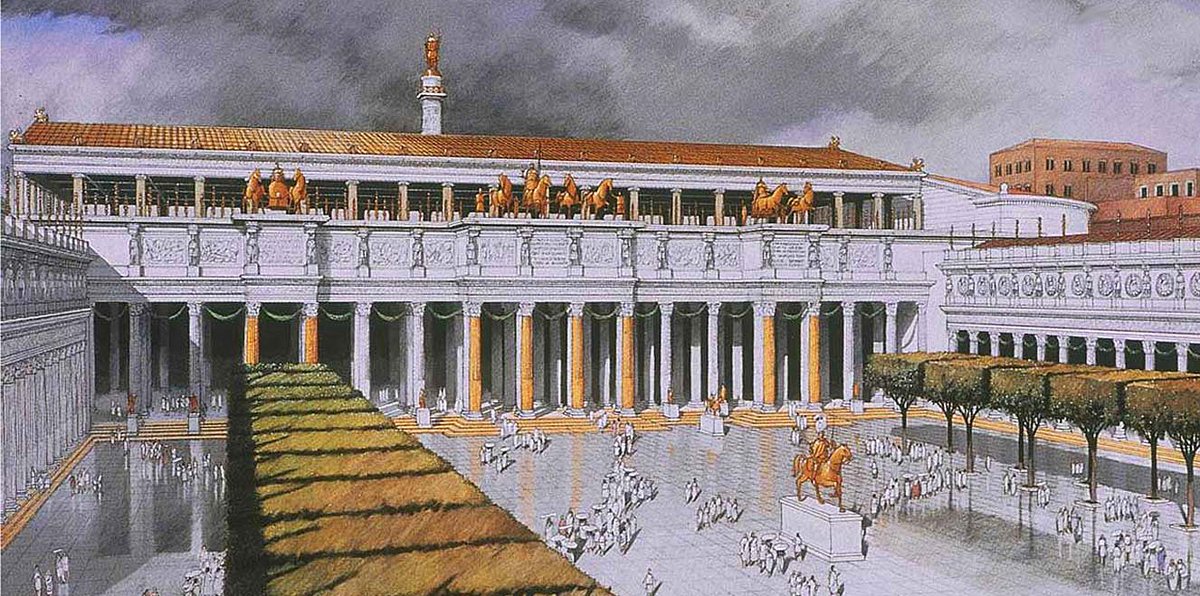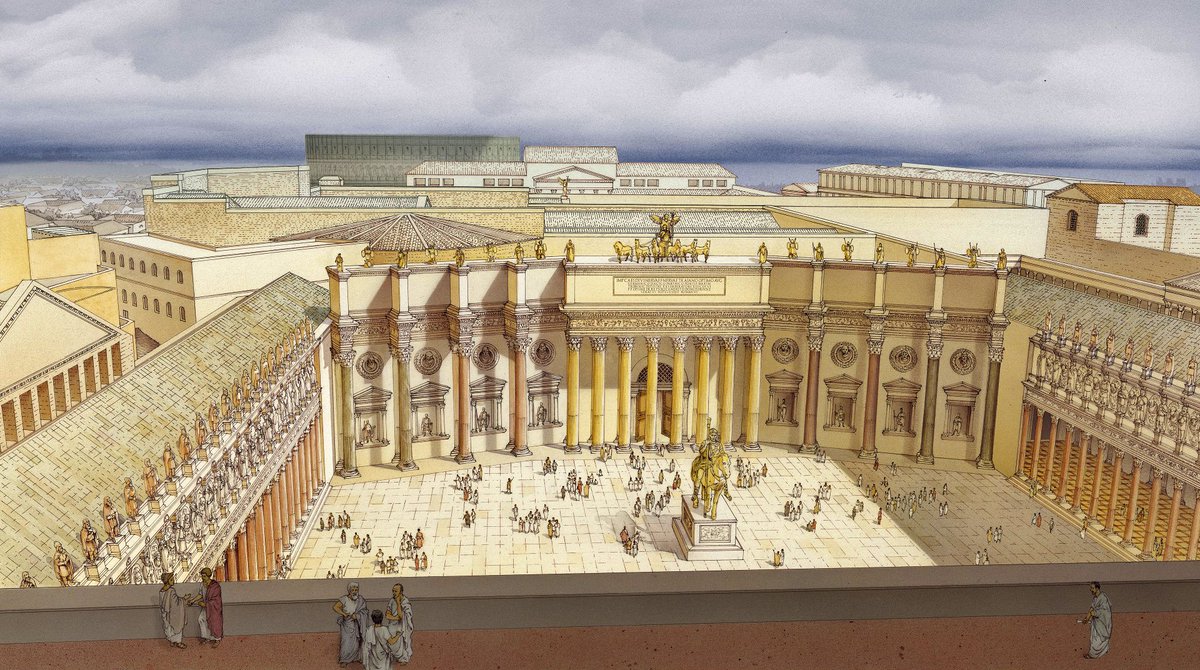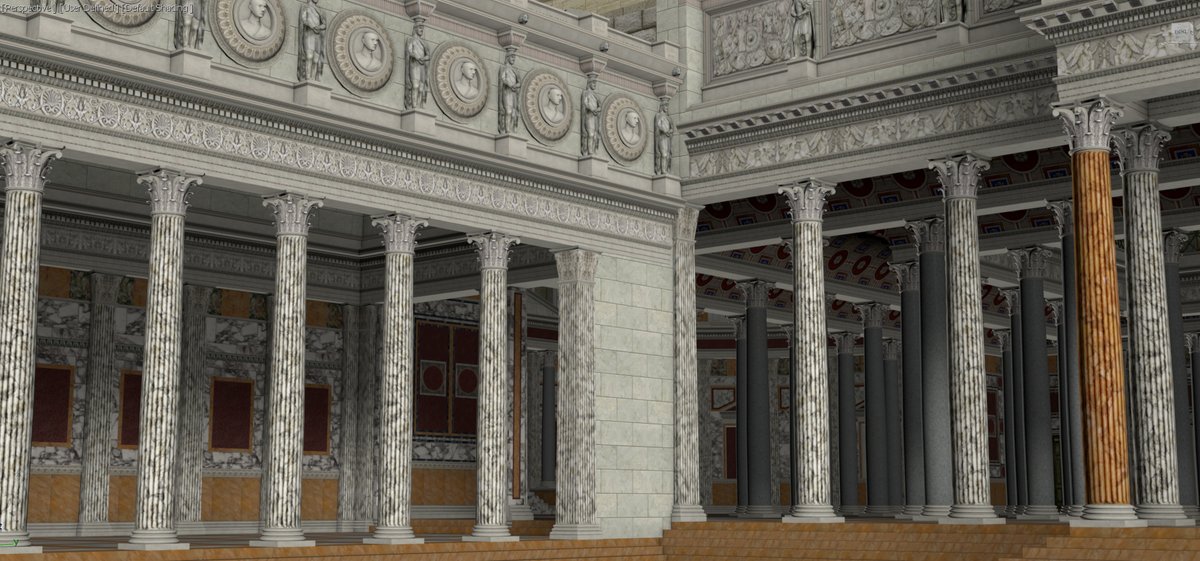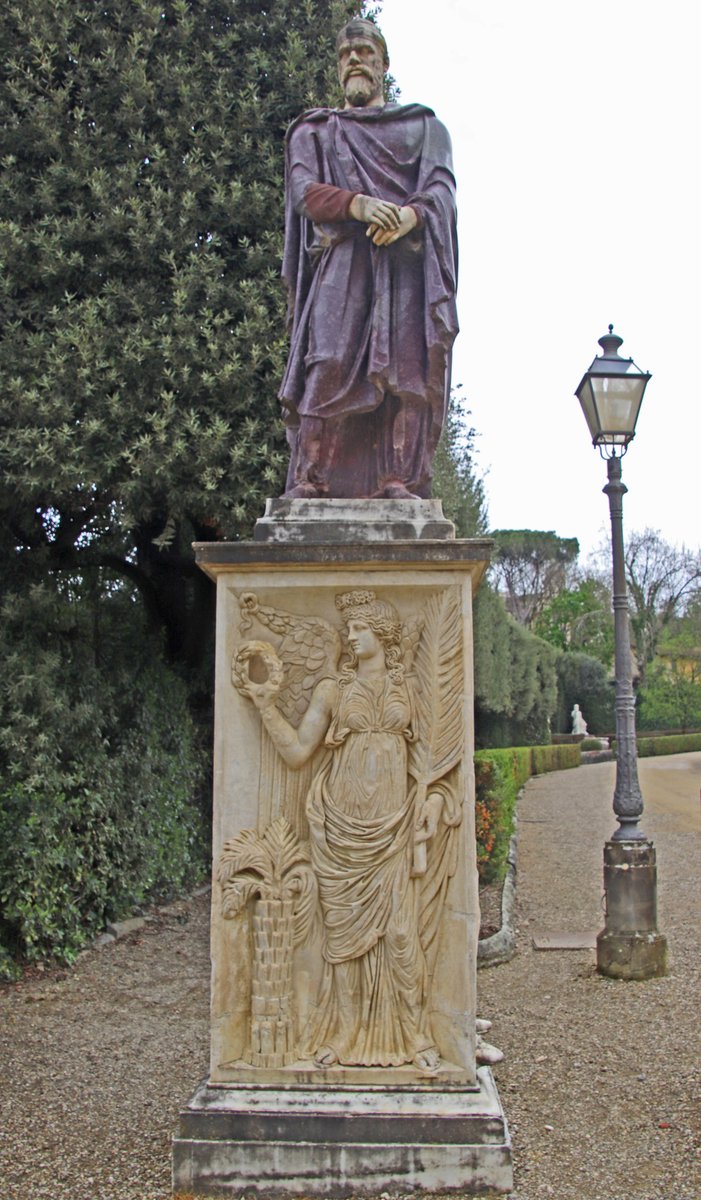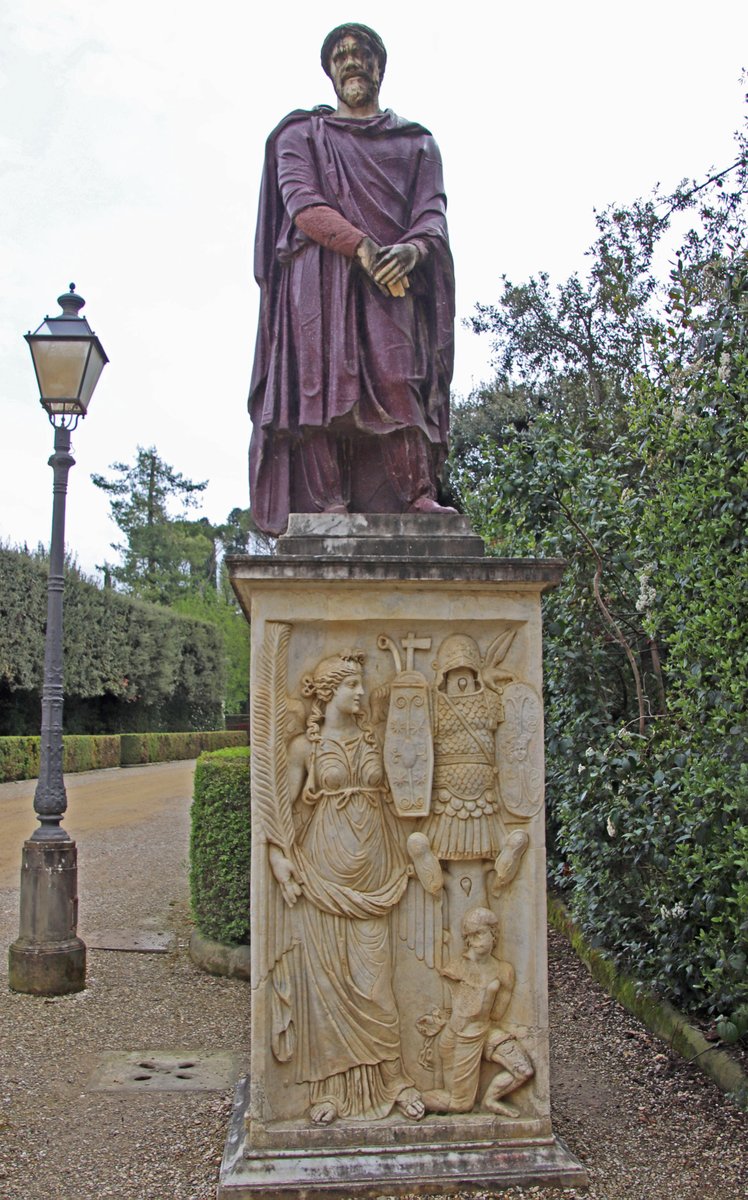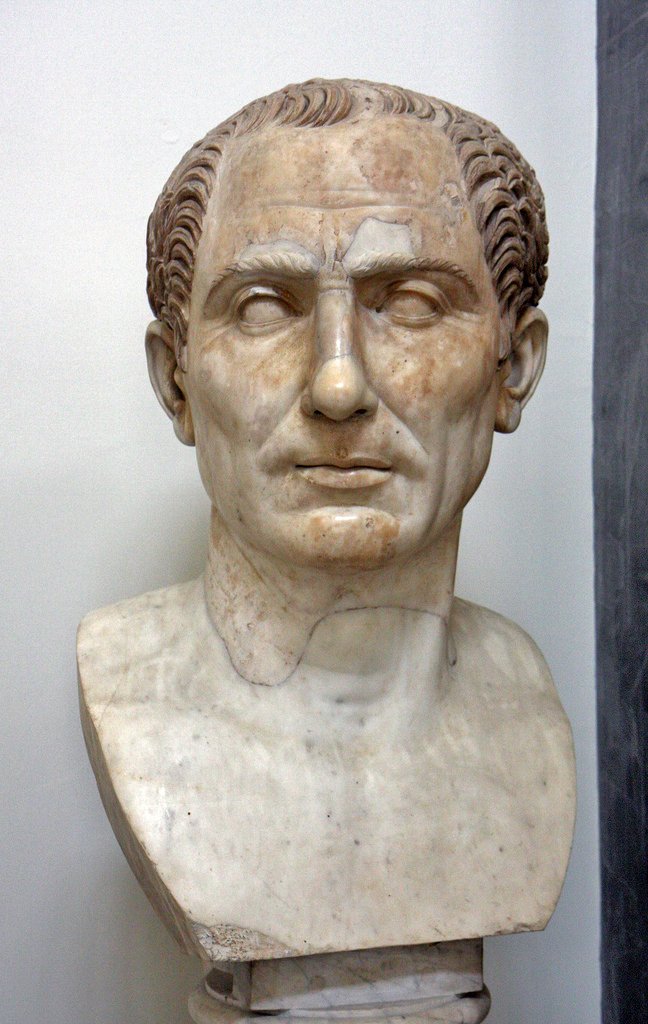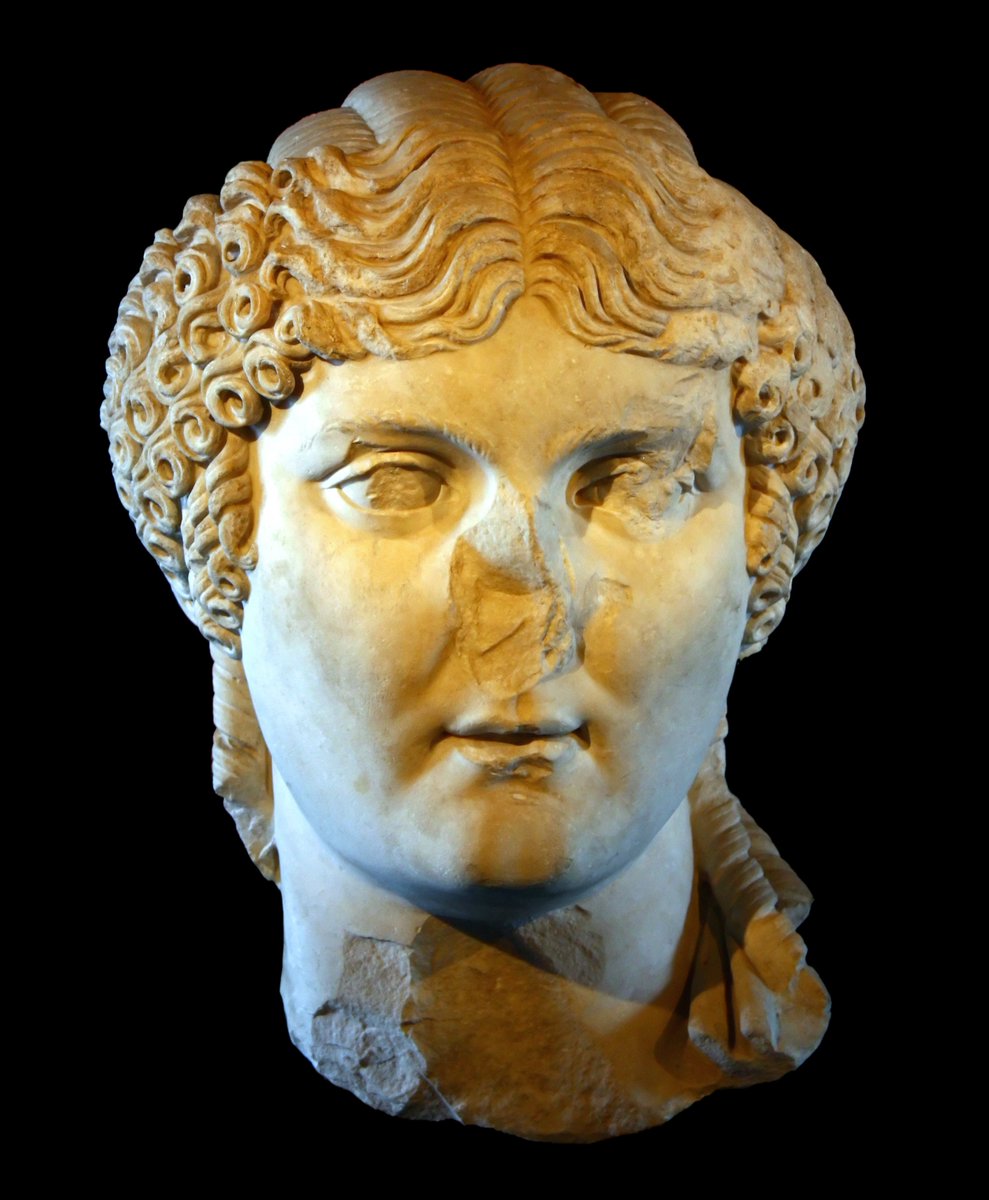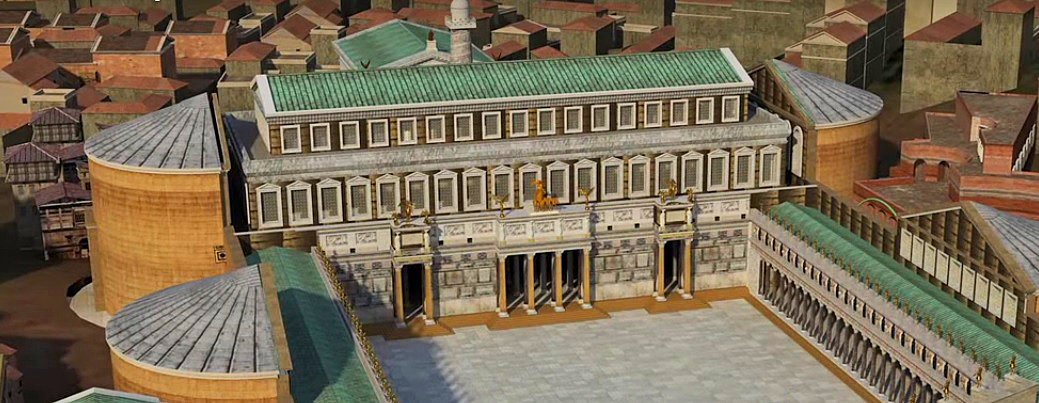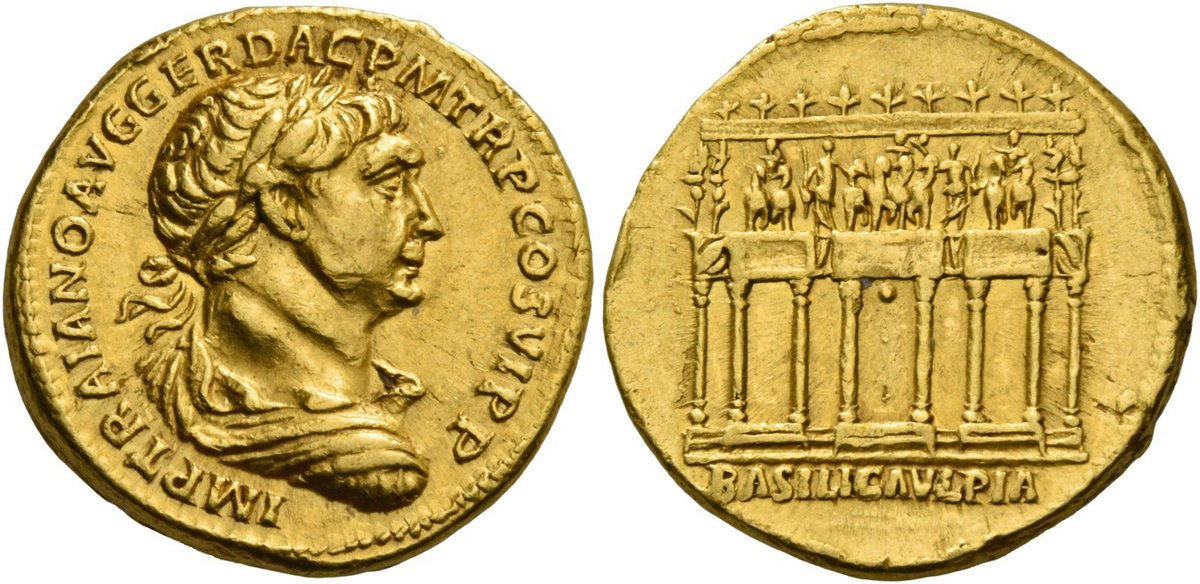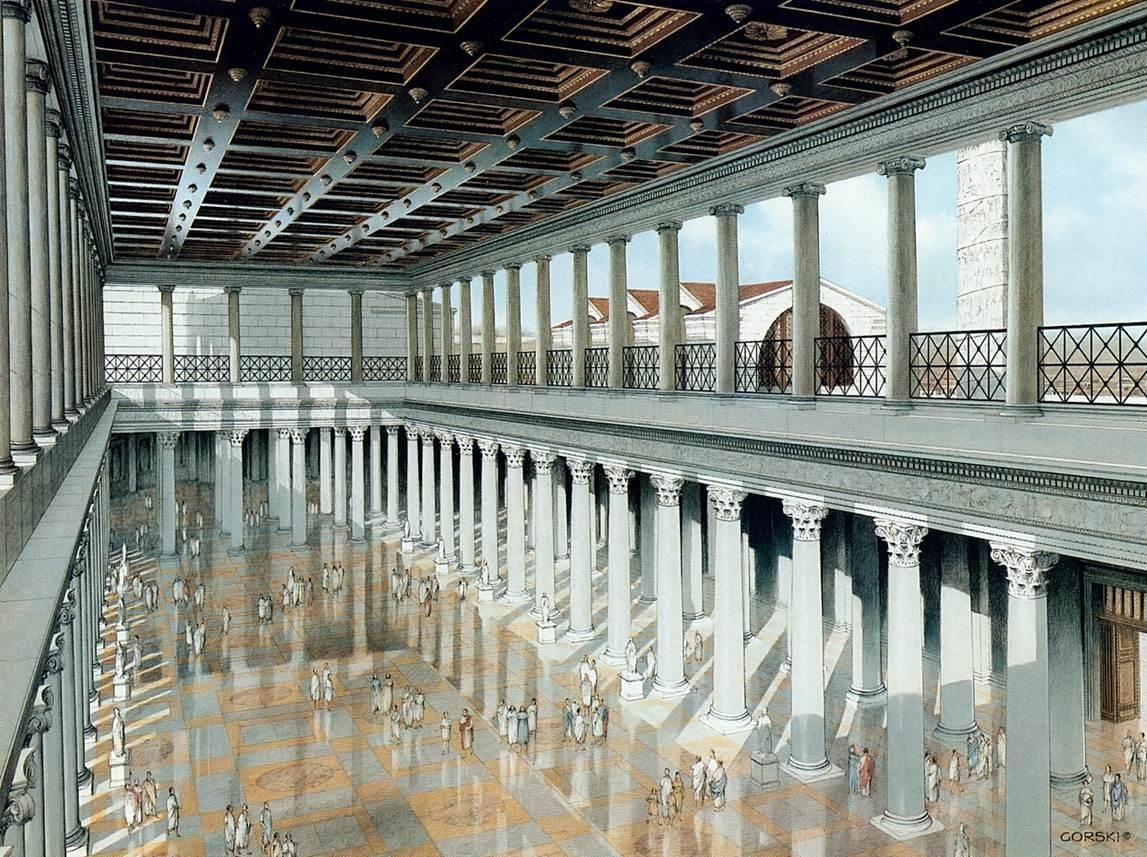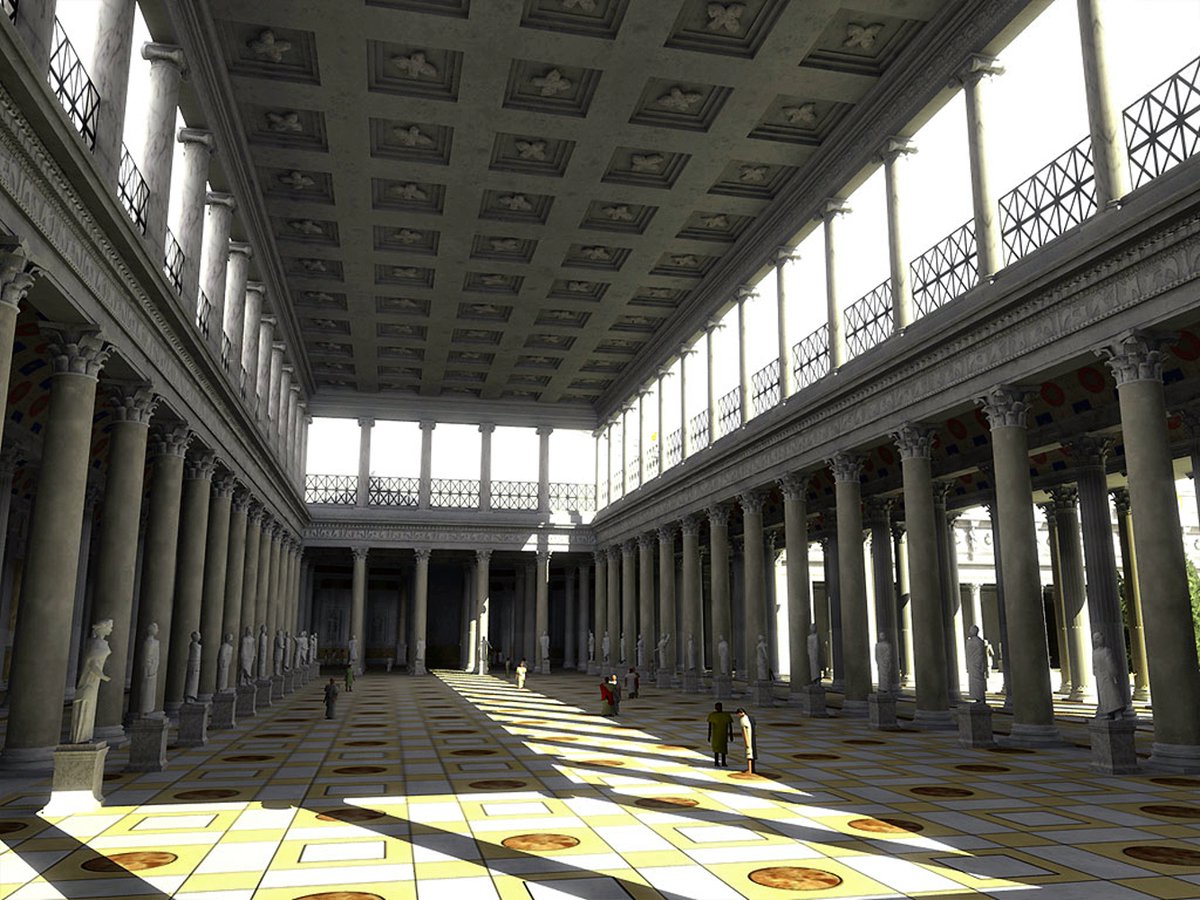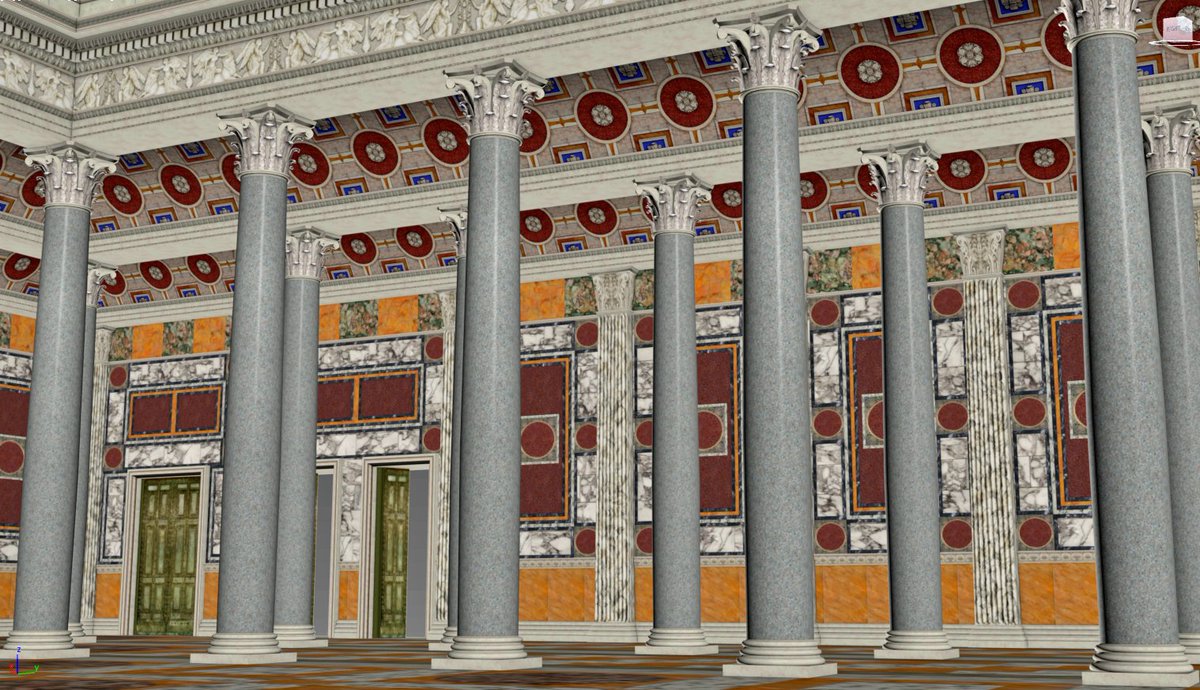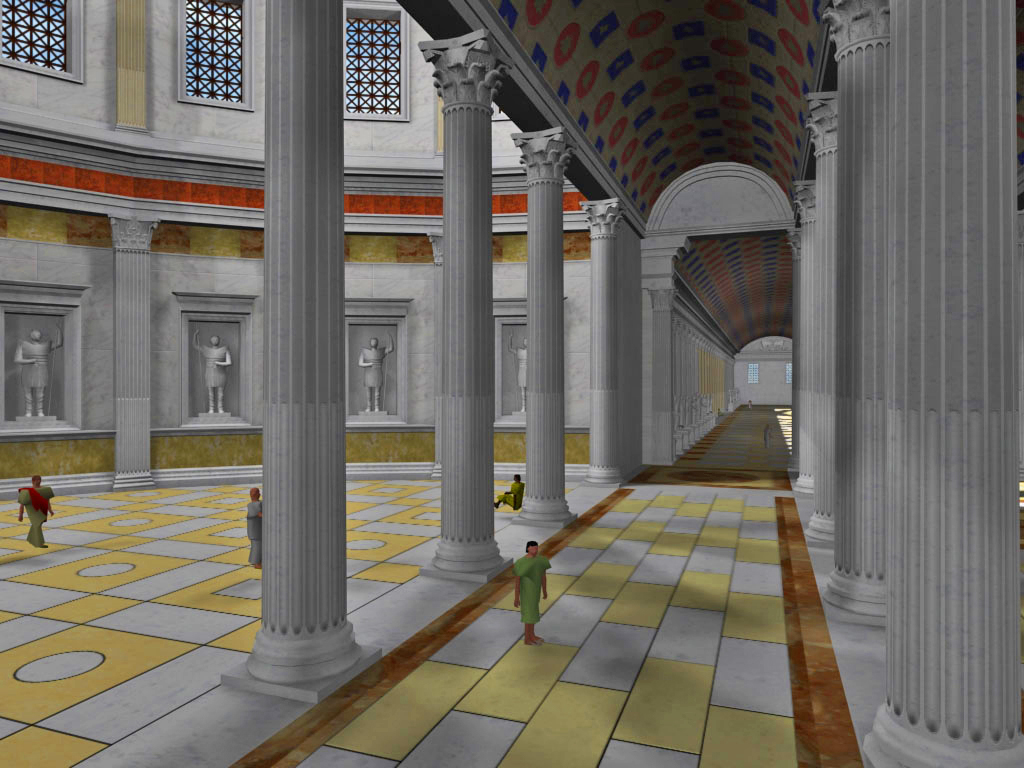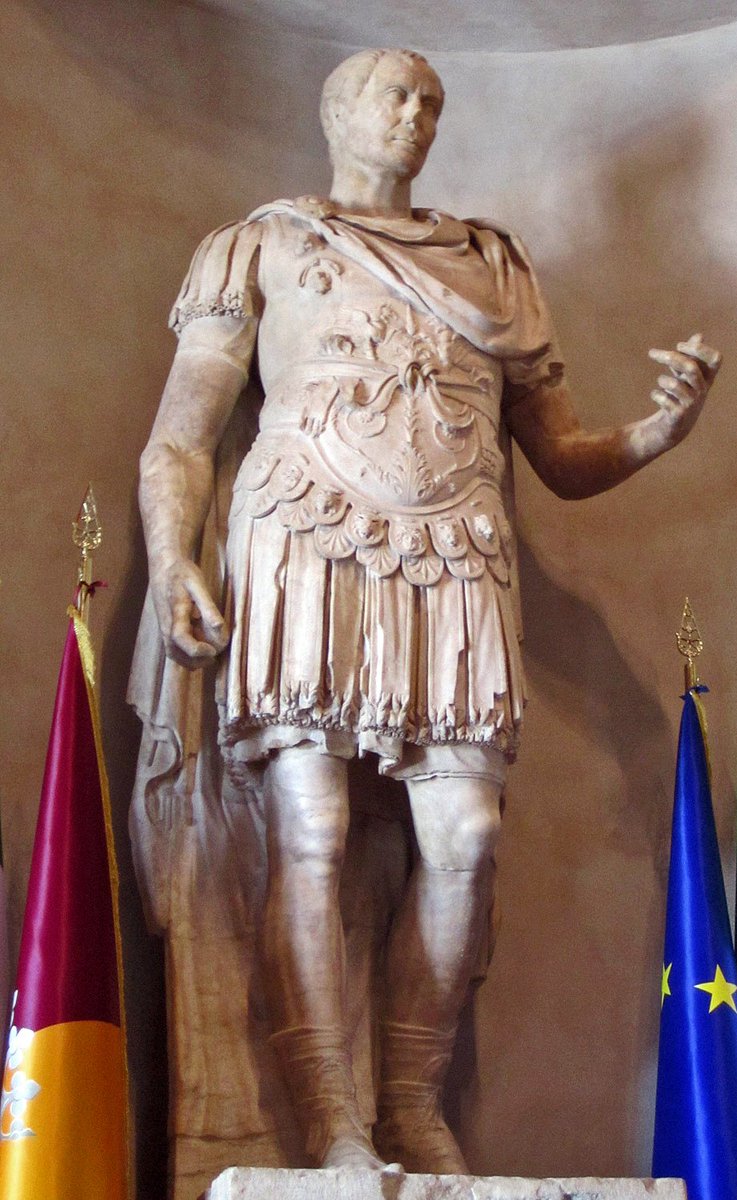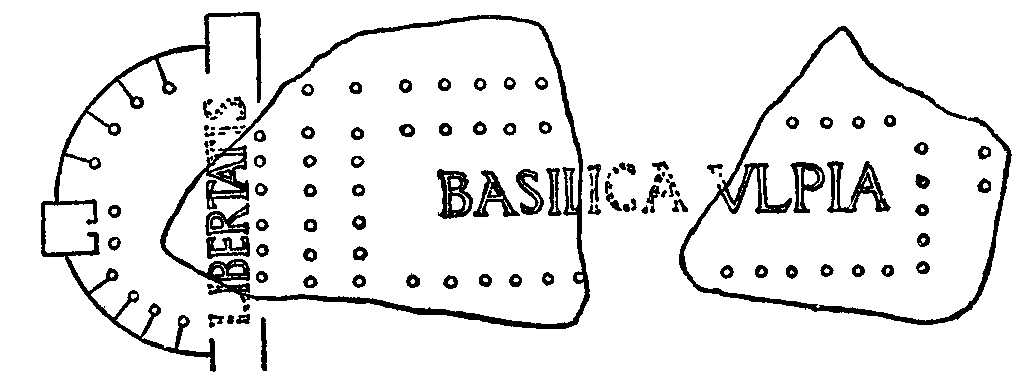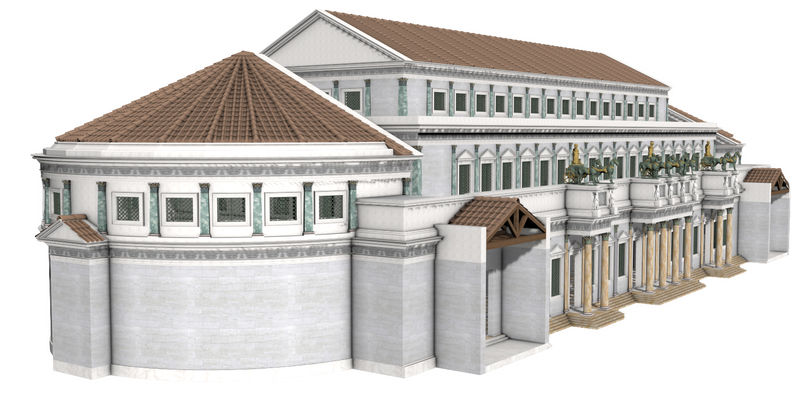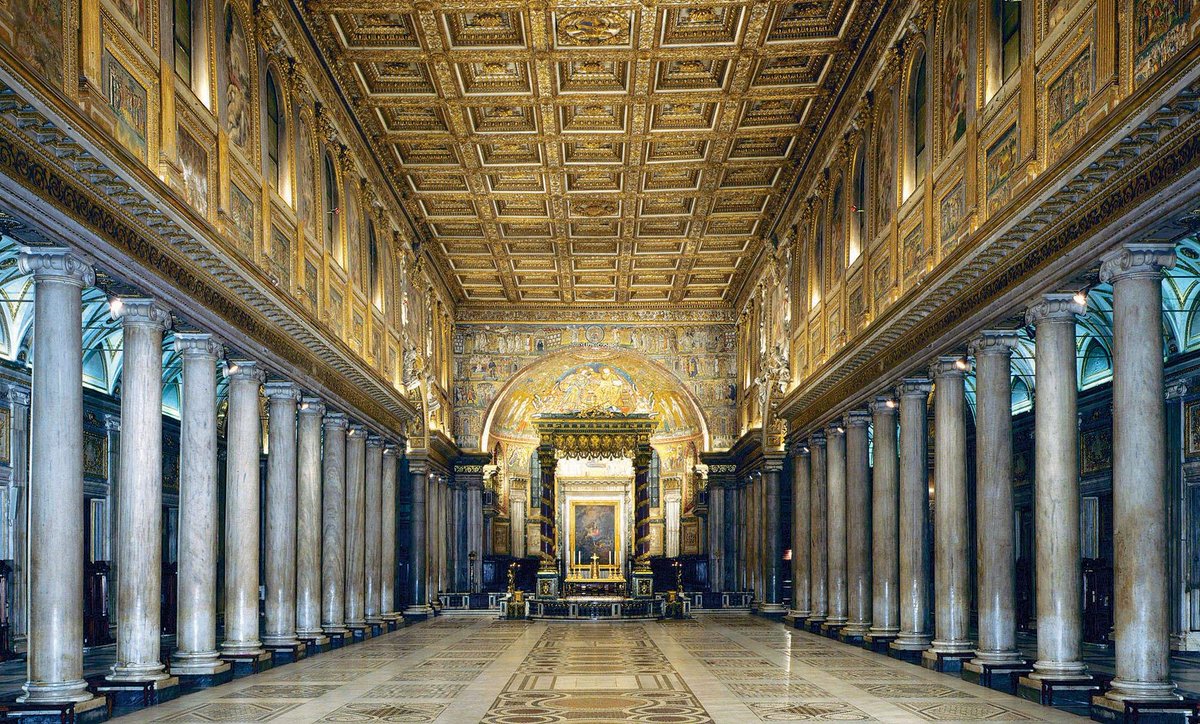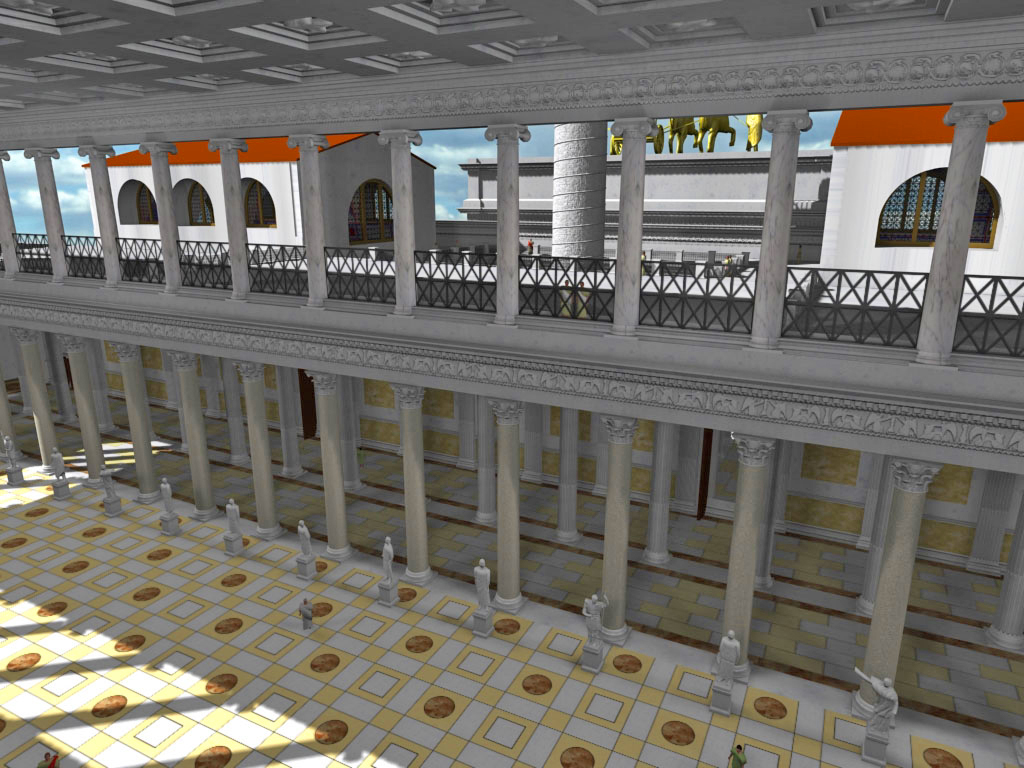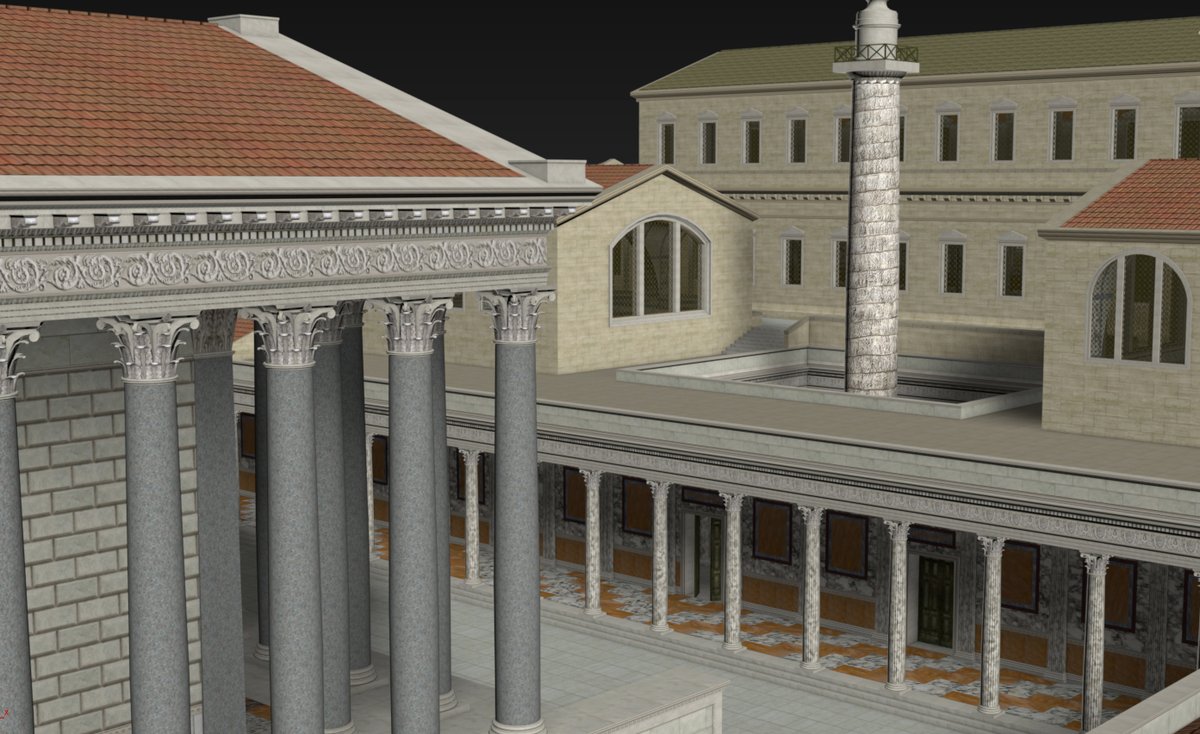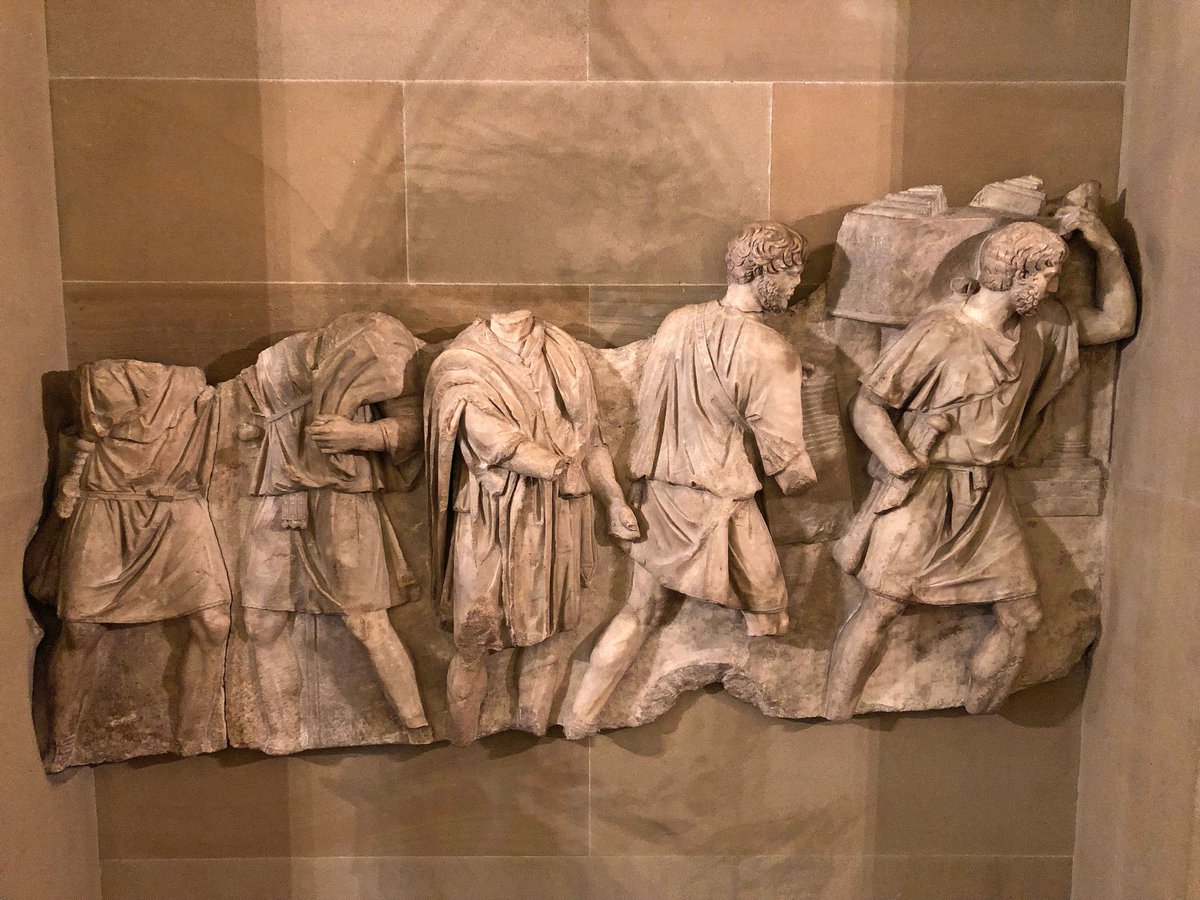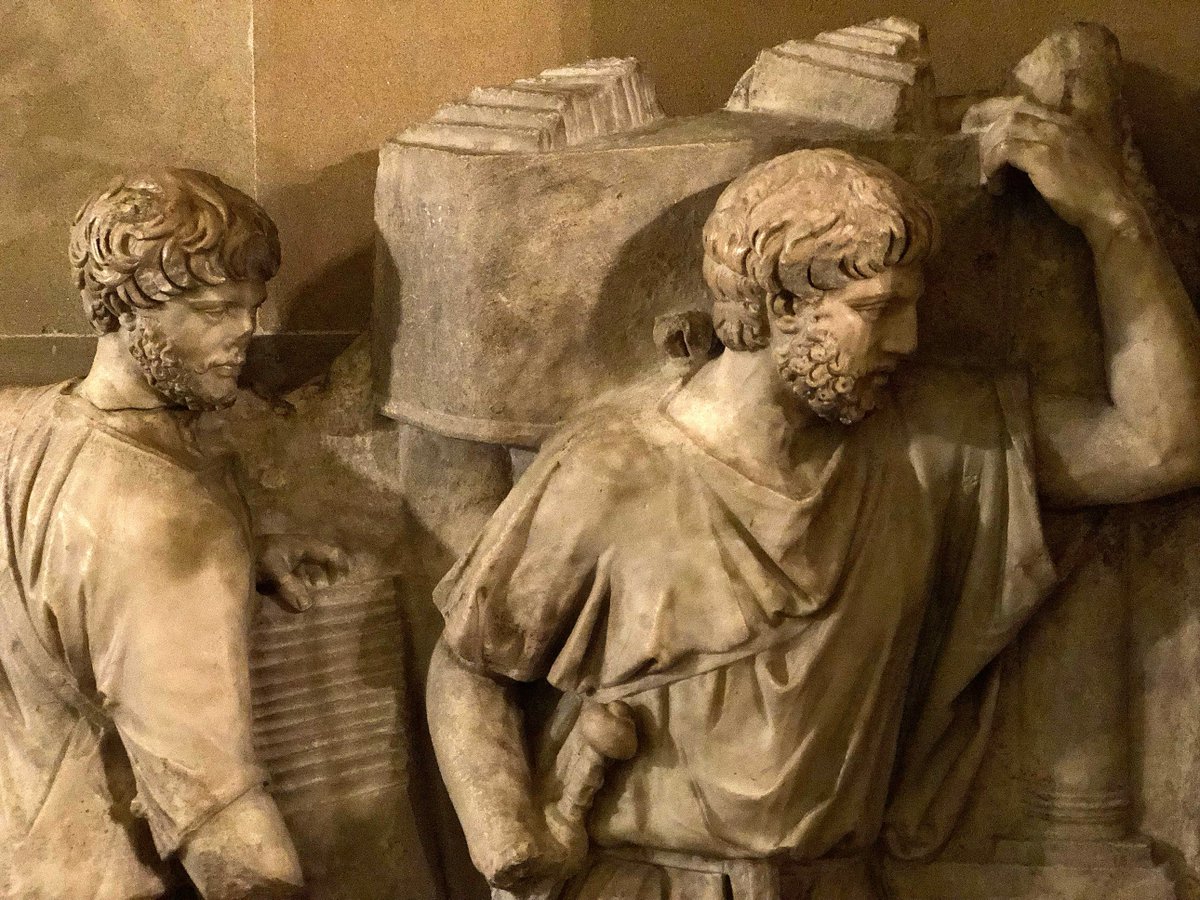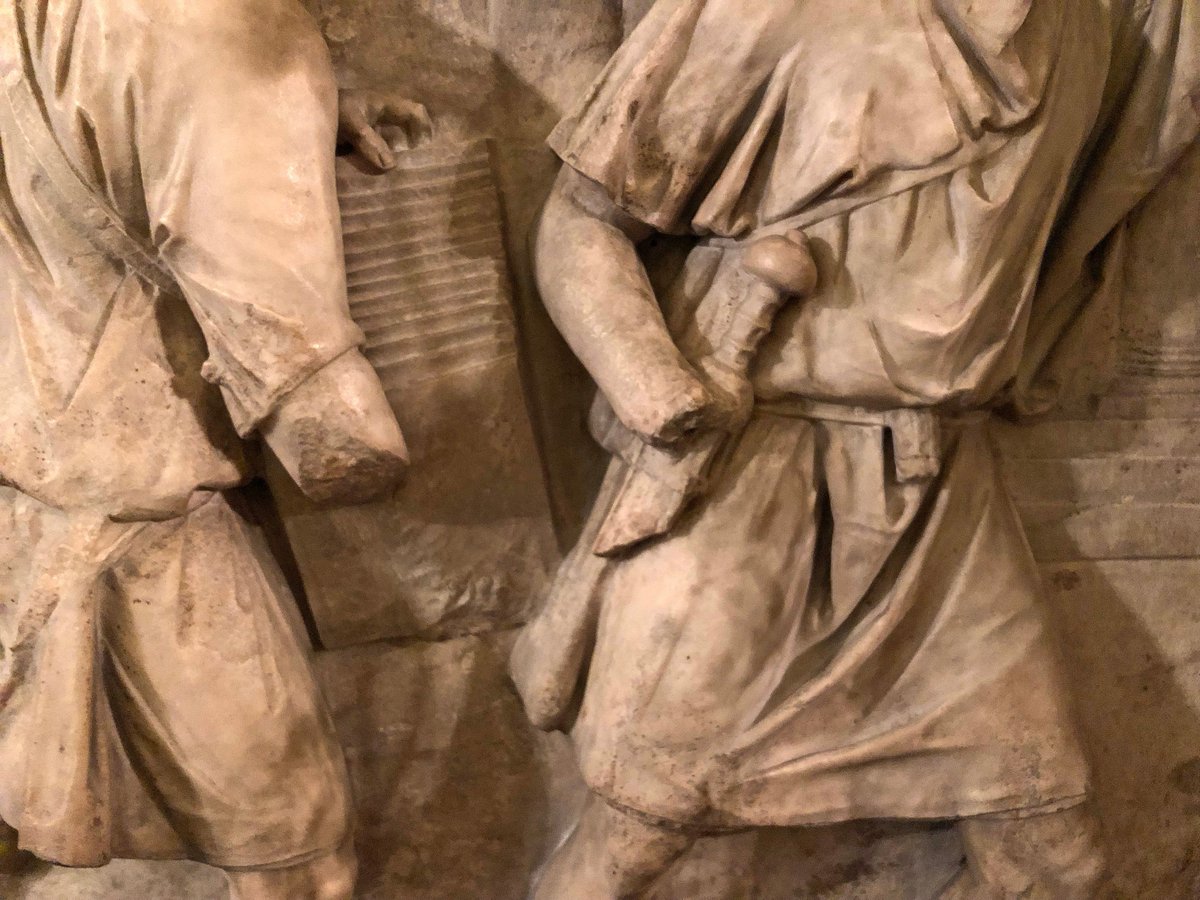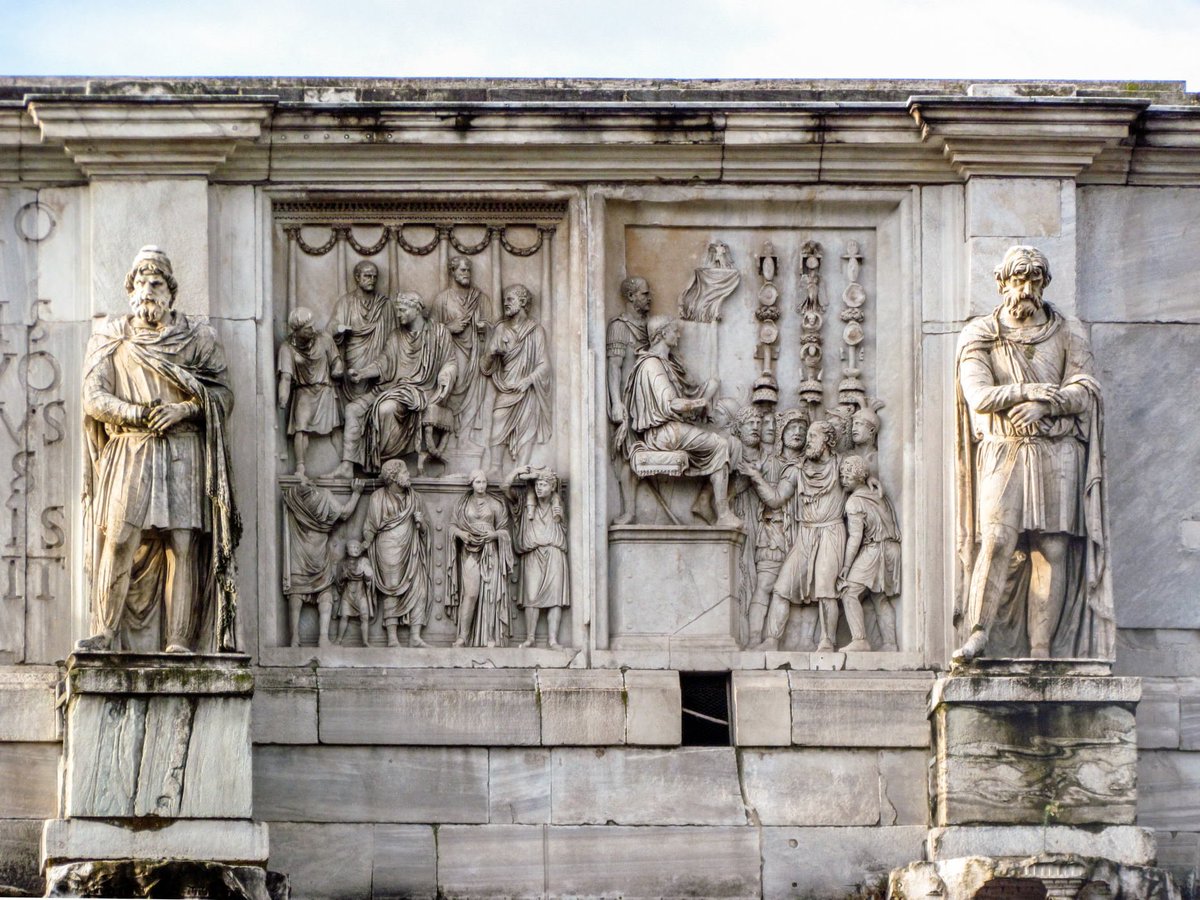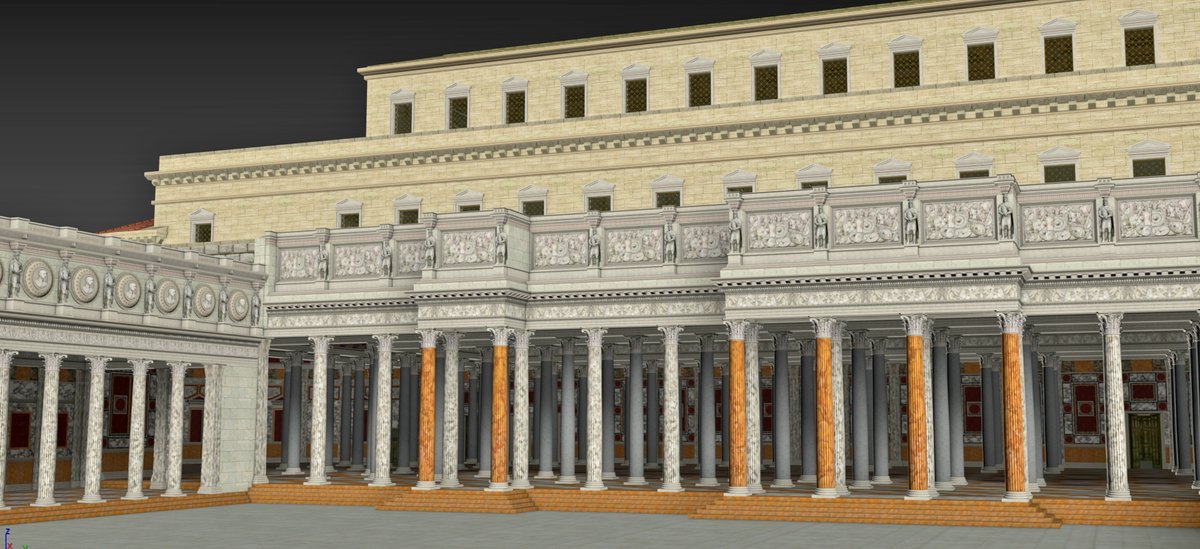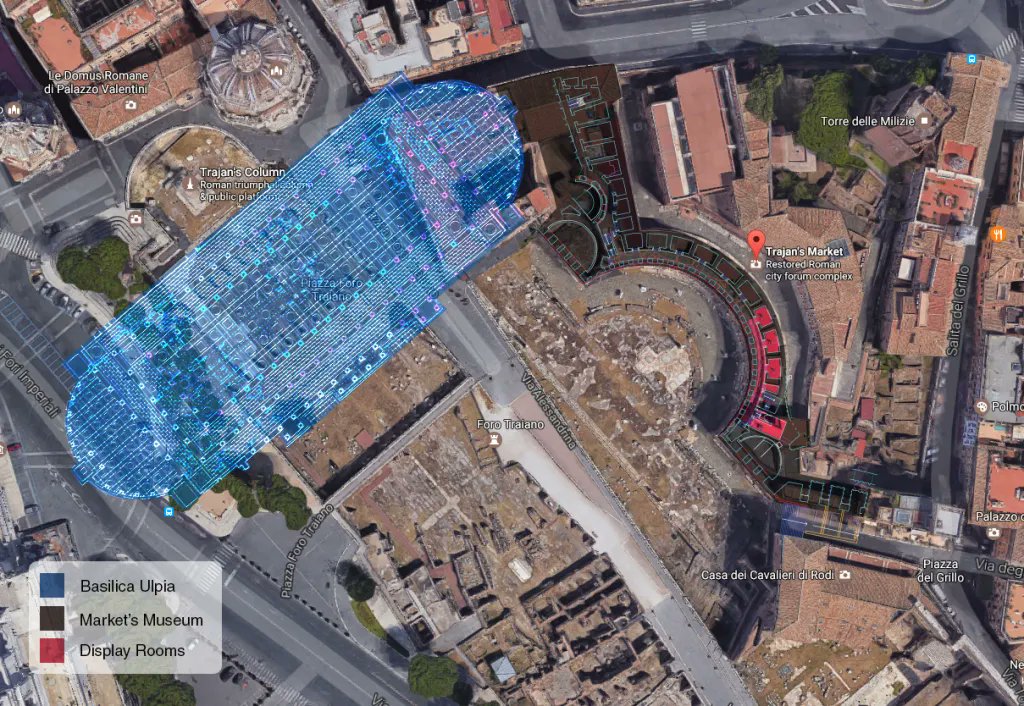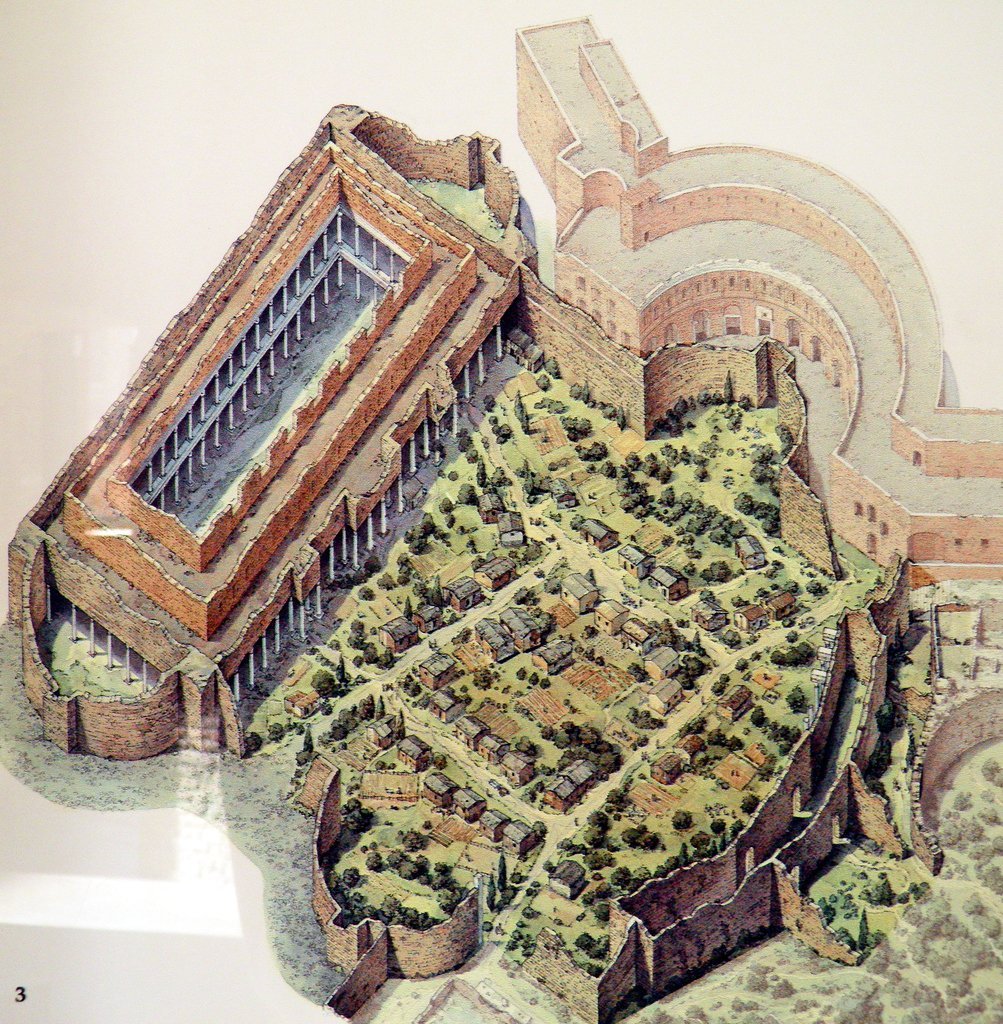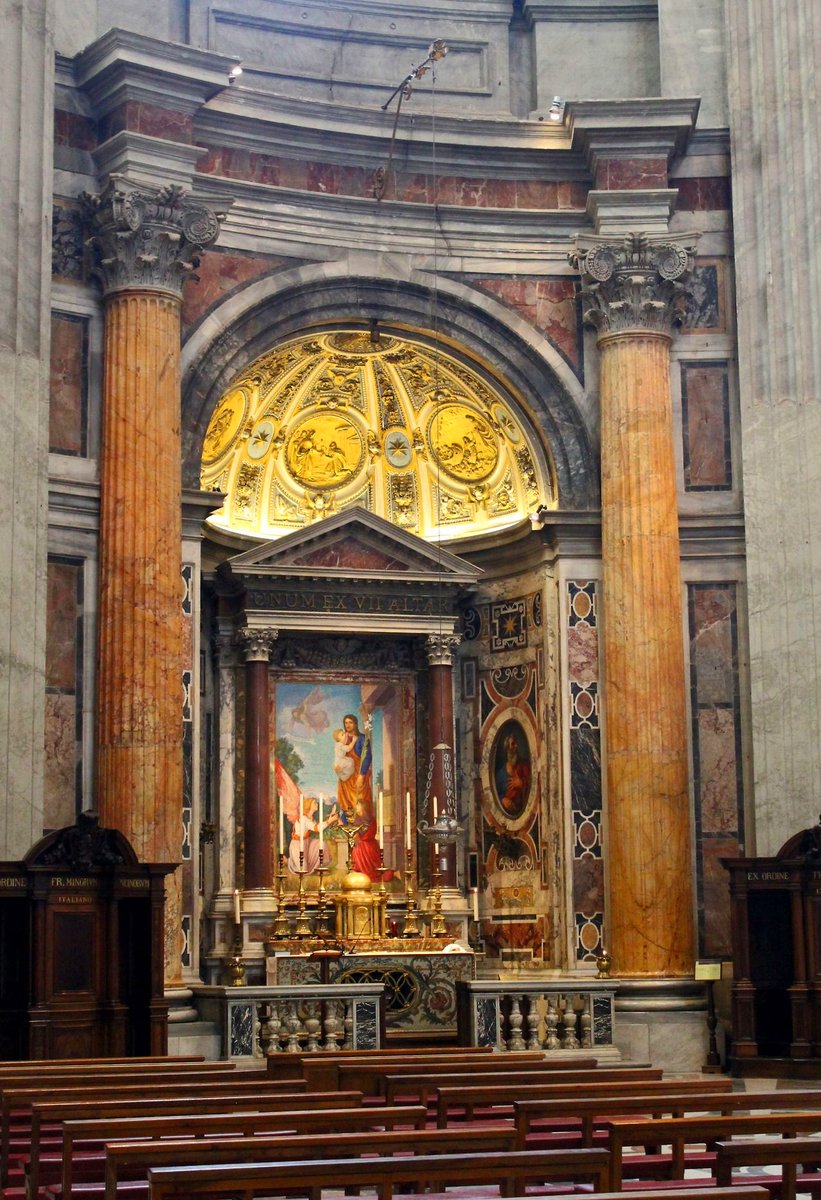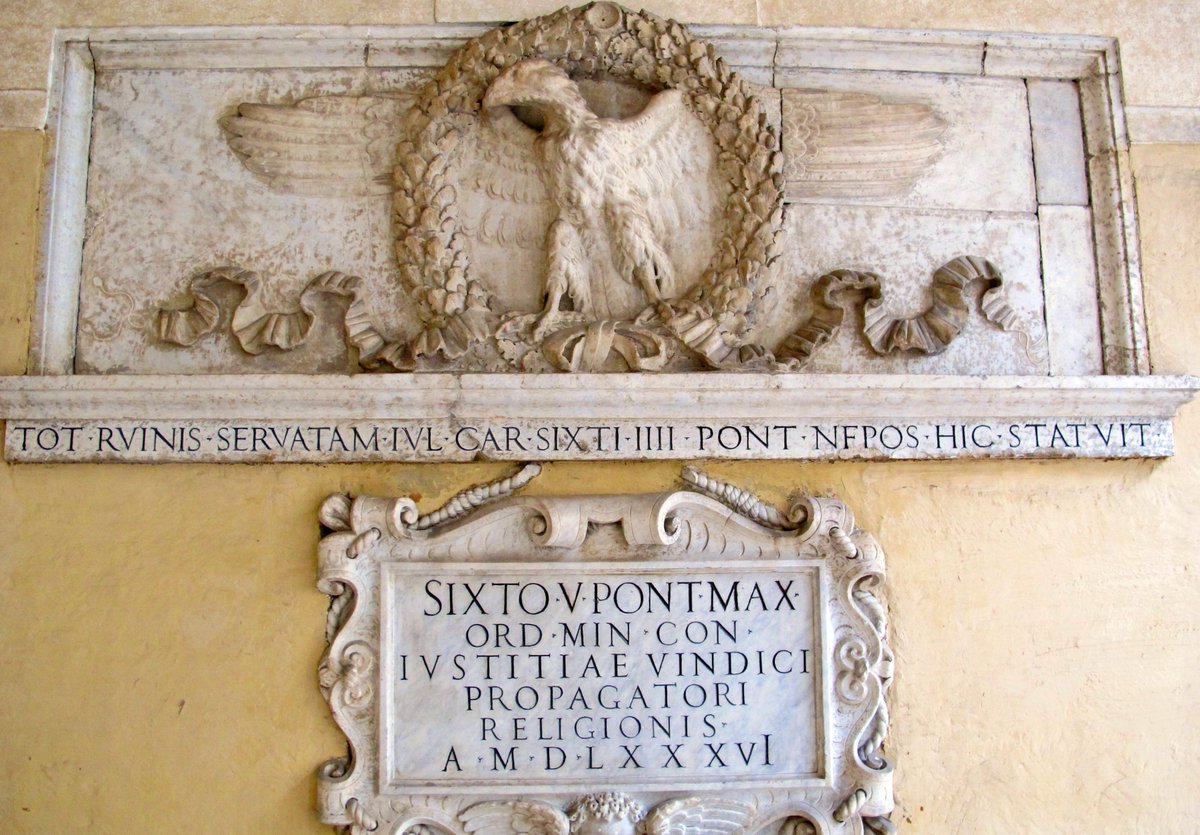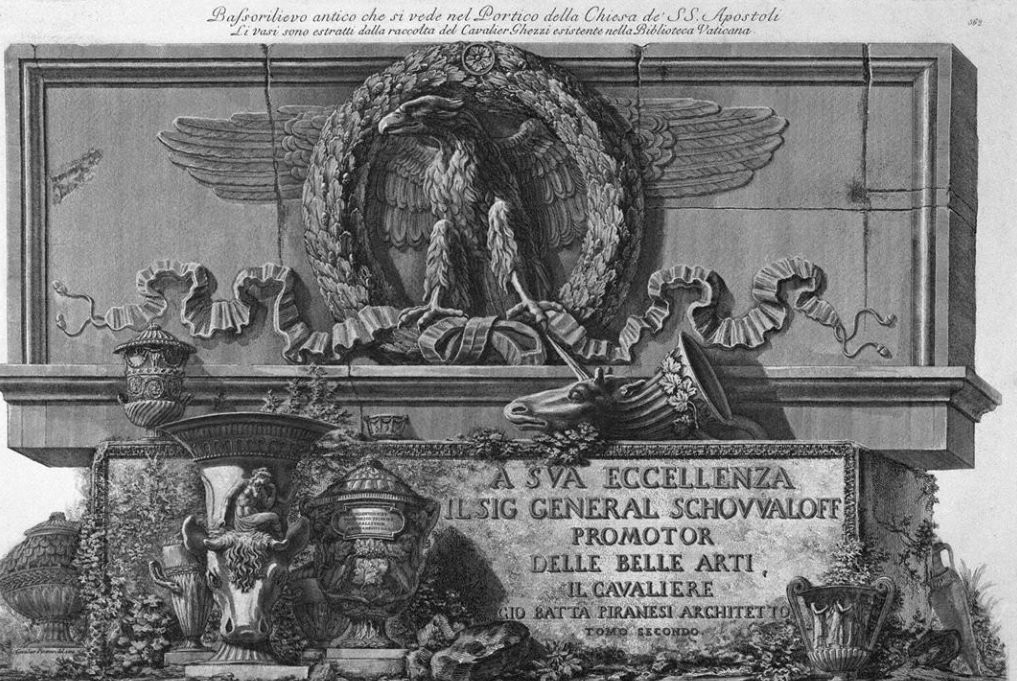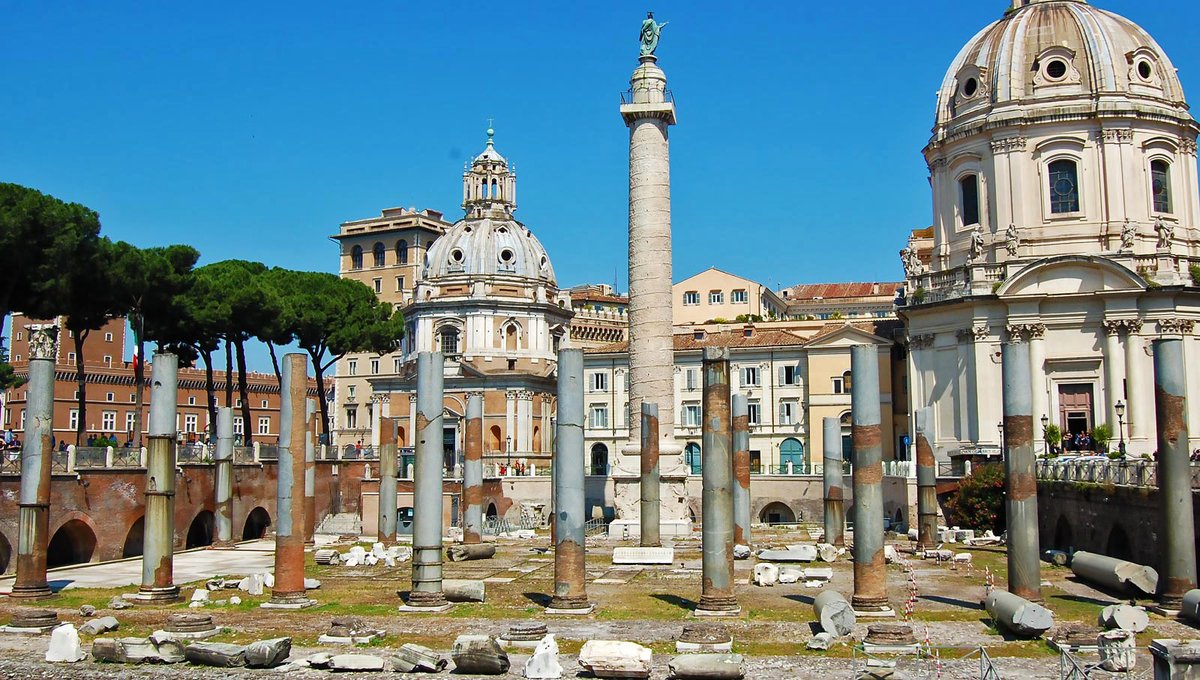The Basilica Ulpia towered over Trajan's Forum complex, the architectural culmination of all the imperial fora. Completed in 112 AD with construction overseen by the architect Apollodorus of Damascus, it was the largest basilica in Rome measuring 117 by 58 metres. #LostRome
The Basilica looked out over a Forum complex consisting of libraries, Trajan's Column (which still stands), an equestrian statue, triumphal arch and a vast plaza paved with 3000 6ft slabs of Carrara marble - all funded by the spoils of Trajan's victorious Dacian War. #LostRome
Indeed, the entire complex was in many ways a single triumphal monument to Trajan's conquest of Dacia. Dignified statues of Dacian prisoners stood in the attic surrounding the entire square and basilica, like Atlases seemingly holding up the massive structure. #LostRome
The Forum's sculpture acted as a Roman hall of fame depicting great and sometimes surprising figures; colossal portrait busts of famous Romans in circular tondo frames (imago clipeata) looked down on the square, such as these of Julius Caesar and Agrippina Minor. #LostRome
The eastern facade of the basilica overlooked the forum plaza; its ornate portico with three projecting porches on columns of yellow giallo antico marble, decorated with a great frieze of captured arms, Dacian captives, military standards and bronze triumphal chariots. #LostRome
The facade is shown on coins of Trajan celebrating the structures in his new Forum. The central portico was crowned by a gilt-bronze triumphal quadriga (four-horse) chariot driven by Trajan and the side porticoes were each topped by a biga (two-horse) chariot. #LostRome
The Basilica Ulpia was a grand civic space with no religious purpose, dedicated to public use as law courts, a place of business or for Romans to just stroll and socialise – comprising a great central nave with two side aisles on each side and large apses at each end. #LostRome
The great hall of the Basilica was surrounded with a double row of 96 Egyptian granite columns, with the floor and walls clad in exotic marbles from around the empire. The massive wooden ceiling was covered by gilded coffers and was famous in the ancient world. #LostRome
Justice would be administered at each end of the Basilica in two identical hemicycle exedrae. Tribunals could be held under statues of great figures from Roman history; the Julius Caesar statue in the Palazzo Senatorio stood in the central niche of the northeast exedra. #LostRome
The opposite exedra was known as the Atrium Libertatis, the "Hall of Liberty" where the ceremony of manumitting slaves would be held if they had gained their freedom, likely under a shrine to Libertas. #LostRome
The plan of the Roman civic basilica with its aisles, colonnades, central nave and apses became the basis of the Early-Christian basilicas; where a presiding Roman judge may sit in the Roman apse, a bishop would preside in a Christian church. #LostRome
From upper galleries in the Basilica, Romans could look through clerestory windows at Trajan’s triumphal column which stood in an adjacent courtyard flanked by Latin and Greek libraries (bibliotheca). #LostRome
The Basilica and Forum had a long life after Trajan’s reign. When Hadrian cancelled the debts of Roman citizens in 118 AD, he had the records burnt in Trajan’s Forum, this frieze showing his Praetorians carrying boxes of debt records to an unseen bonfire in the square. #LostRome.
Later emperors soon began to scavenge marbles and sculpture from the Forum for their own monuments. In 315 AD, Constantine the Great took a number of Dacian captives and friezes from the buildings to place on his own arch which still stands next to the Colosseum. #LostRome.
Yet the complex was still mostly intact when Constantine's son, Constantius II visited Rome in 359 AD. He was amazed at the buildings "unique under the heavens, beggaring description and never again to be imitated by mortal men." #LostRome
In the 400's slaves were still being granted freedom in the Basilica. As late as 455 AD a statue of bishop Sidonius was erected in the library. The city prefect commemorated repairs of the complex in 508 AD. The Aeneid was still being recited in the square in 600 AD! #LostRome
Eventually and inevitably, the Basilica would soon fall into neglect and ruin. Earthquakes would topple sections of the complex. Marbles and statuary would be burnt in kilns for lime mortar. Dwellings and pasture would exist in the Forum through the Middle Ages. #LostRome
In the 16th century Pope Clement VII removed a number of the yellow gallio antico marble columns from the ruins for use in the building of the new St Peter's Basilica. The distinctive columns from the 2nd century AD can still be enjoyed there today. #LostRome
The relief sculpture of the eagle of Jupiter grasping an oak wreath, now in the vestibule of Santi Apostoli, was also taken from the ruins of Trajan Forum in the Middle Ages; the artist Piranesi would engrave the exquisite sculpture in the 1770s. #LostRome
Some re-erected granite columns are all that now remains of the once-magnificent Basilica Ulpia, which lies partially under the Via dei Fori Imperiali. Thankfully, Trajan's Column has survived the ravages of the millennia and still stands defiantly among the ruins. #LostRome

 Read on Twitter
Read on Twitter